Abel Tasman, Franz Josef, Makarora, Wanaka, Queenstown ….
Abel Tasman was a Dutch explorer and the first to land on New Zealand. The area which his ship came ashore was the northern corner of coastline now devoted to the Abel Tasman National Park.
Having spent a few days in Nelson planning our walk and equipping our Dutch friend with correct shoes we were actually very well prepared in comparison to the rest of the group whom on arrival were given a few minutes stop at the main water-taxi & kayak company to plan their stay.
The I-site had given us an outline plan to walk a 45km section over three days. The main consideration for the track is the tidal crossings which can only be crossed at low-tide. Taking these crossings into consideration meant only a 1.5hour walk for the first day. The huts along the track are equipped with bunks, toilets, water and a log burner, meaning all food and cooking equipment must be carried. We spent a good few hours in Nelson during which Matt made lots of phone calls to water-taxi and national park offices to firm up his feeling that we could walk the section in two days. This would cut the need to carry so much food and save money on the expensive overnight huts.
After a good sleep in the tiny village of Marahau we stored our big bags and set-off for the water-taxi. The water taxi would take us two hours along the track where we would begin our walk. As much of the park can only be accessed by water the taxi operation is well organised. We got into the boat and were then driven to the jetty and reversed into the water. Within minutes we were under-way.
We made a number of stops in the various bays along the way to drop-off and collect passengers. One of the bays we stopped in was the bay we would soon be crossing. The sheer volume of water which would be moved for low-tide was incredible. The pictures below show the crossing left-right across the back of the boat and the hut which we would be aiming for, marked with the orange marker.
We were dropped off and began our walk along the track. Luckily whilst delving into our options for the walk somebody mentioned a little-advertised option of having the bulk of our equipment dropped off at our night-stop by the boat – for free!
With day bags of water, food and coats it was nice not to have to carry the rest of the kit.
It took us just over an hour to reach the tidal crossing where we stopped for some lunch. We were a couple of hours early which meant a fair wait until low-tide.
The water drained fairly fast and the resulting expanse of land was a great sight. Initially we believed that we would be able to walk right across without getting wet but we soon realized that we would be wading up-to our knees.
The first days walking was 20km long and followed the coastal track back towards the village of Marahau at the beginning of the track. The track was fairly hilly in places and we crossed numerous bridges, rivers, waterfalls and beaches with some great scenery.
At around 6pm we arrived at our stop for the night, the Bark Bay Hut. Matt went hunting for our luggage, soon joined by Emma. The big bag we had left for the boat to drop off wasn’t in its correct place and was nowhere to be seen. Eventually we located another group on the beach who had misplaced it amongst their similar looking bags from the same company. We were glad to find this bag as it contained our sleeping bags, food and cooking gear!
A few other walkers were staying in the hut and we got dinner going whilst chopping wood and firing the log-burner for the evening. All of us were tired and as there was no lighting in the hut we all got an early nights sleep ready for the next days walking.
We started off along the track early the next morning for a 25km walk back to Marahau. It was a hilly days walking with some more tidal crossings but all went well and we arrived back in Marahau for a nice big meal.
Stray is the only company which stops directly in the National Park which is convenient for walks however not much else can be found there and no food shops are located in the village. We did manage to find a nice cafe and spent the next day relaxing and catching-up at the cafe.
Two of group we travelled with for our GAP tour of Vietnam actually live very close to Marahau in the main town. They run a motel and had offered us a room which would have been nice if we had our own transport! We kept in contact with them and agreed to meet the next day. Bret drives one of the water taxi’s in the park and had dropped by at our hostel to say hi the evening before which was a nice surprise. We met Bret & Jane at the cafe for a nice drink and catch-up. It is strange to think that a few months before we were travelling with these people for two weeks in Vietnam.
Time flies and it was time to catch the bus south again towards Greymouth. The drive took us through an area known as the “Pancake Rocks”. The formations of the rocks here was worth the stop and like nothing we have seen before.
Greymouth is an industrial town on the west coast and it shows immediately upon arrival. Arriving on a Sunday the town was deserted and only a few dodgy-looking locals roamed the car-free streets. It was the only stop where the driver wanted to stay with the bus whilst we checked-in and asked us to remove everything overnight, a little unnerving but understandable once you take a look at the local characters!
Our accommodation for the night was fairly poor but Matt took full advantage of the $12 all-you-can-eat pizza offer.
The west coast is renowned as the most scenic driving area of New Zealand and therefore one of the best in the world. Although the bus was good and we stopped regularly for photo’s we wished at times that we had our own vehicle and were driving it ourselves. Luckily we left Greymouth the next morning for the famous Franz Josef Glacier.
Unfortunately Emma had been experiencing pain in her lower leg/ankle following the Abel Tasman walk. We soon worked-out that this was some kind of shin splint and that only resting the leg would allow it to heal.
It was therefore a shame that the main (and only) activity in Franz Josef is the glacier day walk. Matt decided he would still go with the rest of the group but decided against it after checking the weather reports which signalled a nasty day. The main sticking point was that the front section of the glacier had recently been covered by a large rock-slide and therefore the ½ day option wouldn’t get past this section to the clean ice above. The full days option meant spending 6 hours + on the glacier in possibly wet conditions.
We decided to save the $180 for Matt to walk and spent the afternoon the the local hot-pools in the 40 degree waters!
The group returned late afternoon and the weather had luckily held-out for them although they were all fairly zapped.
As it was Halloween we sent the evening in the bar and many of the group made an impressive effort at the fancy-dress competition from all the charity-store clothing they brought in Greymouth.
We decided that we would allow Emma’s leg to rest and would hire a car in Queenstown to re-drive the West Coast and walk the glacier.
Driving again we were not far away from the Adrenalin capital of the world, Queenstown, with only one night stop at Makarora first. Makarora is a small town on the west coast, nestled between the hills in a stunning valley with a large river at its centre. With no real activities to do here we took a short walk down to the riverbed, past the many lambs ending at the riverbank covered in driftwood.
The drive from Makarora to Queenstown was to be the best yet and we were also rewarded with clear blue skies. The drive took us past the Fox Glacier where we stopped at the terminal face briefly where amazingly it was raining so the camera stayed inside! We stopped off at the “blue pools” an area of glacial rivers and bridges.
Areas of the West-coast are abundant in Whitebait, the worlds most expensive fish per kg (a little deceptive as a kg is a large amount!). In New Zealand a popular way to cook these fish is mixed with egg and made into a “patty” like a burger. We managed to find a stop for this along the road where we all got a free sample, which was very tasty, and therefore we also all purchased full patties.
The dog took a liking to Emma’s scratching and when she tried to stop jumped up at her for more attention where he remained for some time!
Our lunch-stop for the day was the up-market town of Wanaka with its clear blue lake and nice boats. The snow-capped mountains in the backdrop made the scenery here even more spectacular.
The group made a stop outside Queenstown at the original AJ Hackett bridge bungy jump. The founder of the business was the pioneer of bungy jumping and it was incredible to watch the short film on its origins and development. We had no intention of jumping so headed for the viewing platform adorned with cameras from the “jumpers”, three of the girls from the bus. At 47 metres it was small by bungy standards but still impressive!
With the adrenalin still pumping for those who jumped we started the short but stunning drive into Queenstown alongside the lake.
The bus makes a compulsory two-night stop-over in Queenstown to give everyone enough time to explore, party and take on the adrenalin fuelled activities. As a Mecca for backpackers we thought it would also be a trashy, cheap town and thankfully we were proven very wrong. Queenstown is actually one of the most expensive (and beautiful) towns in NZ. The location alongside the lake and surrounded by snow-capped mountains coupled with the ski-fields nearby and endless nice restaurants & bars makes for a popular wealthy playground. Many plush houses hug the base of the hills overlooking the town.
We spent our first afternoon taking a short cruise on the lake. The previous evenings snowfall covering the hills and mountains added to the scenery.
In the centre of the image below is one of the top scenic golf courses in the world.
Queenstown is home to the famous “Ferg Burger” restaurant/takeaway. It wasn’t long before Matt and the guys were itching to try out these huge burgers and Matt chose “The Big Stuff” almost the biggest on the menu. The owners have proudly displayed an official letter from a doctor regarding a dislocated jaw that his patient suffered whilst trying to eat a burger here! Matt just about managed to get his mouth around it enough to eat it!
We had a great night out with two Irish guys and a Welsh girl from the bus and agreed to meet the following day to take on the luge run.
At the back of the town is a cable car taking you to a hill-top with restaurant, downhill cycle tracks and a luge (aside from great views).
The luge is a downhill race-track with tight bends and banks which you navigate (and race) on a small kart with a single brake. We had to take a ski-lift to the top to begin the descent before doing the same again, six times. It was great fun and fast with the potential for a nasty injury if you try to tackle it too fast.
On the second run down there was an almighty bang and Matt looked back to see that Emma had driven straight into the fence, head-on. Luckily she had managed to brake enough not to make it a serious crash!
Queenstown is undoubtedly the most incredible location for any town/city we have seen and it clear to see why the wealthy and backpackers alike flock here. The permanent population is 13,000 and the nightly tourism population can reach over 15,000!
Our trip will take us tomorrow south towards Invercargill & Stewart Island before heading to Milford Sounds & back to Queenstown.
We hope everyone at home is well!
Love Emma & Matt
xxx



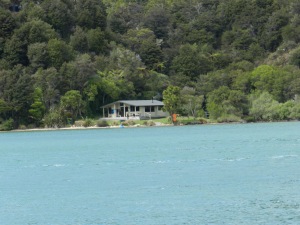
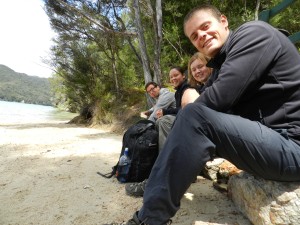


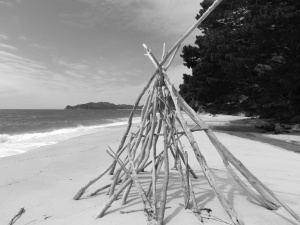


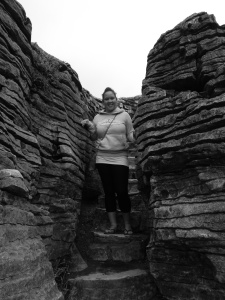

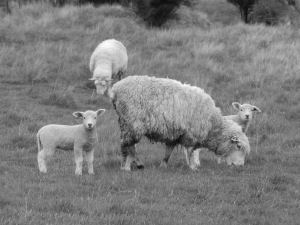


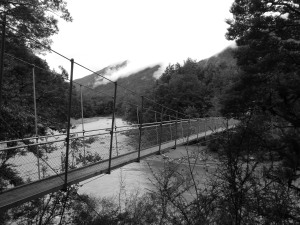
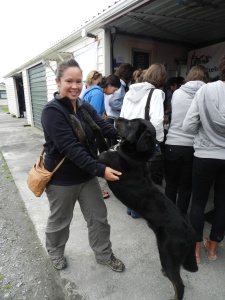

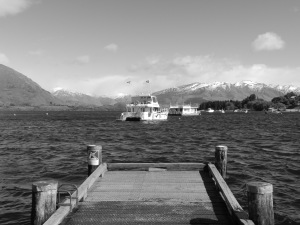
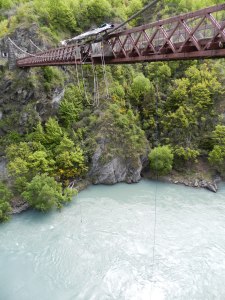
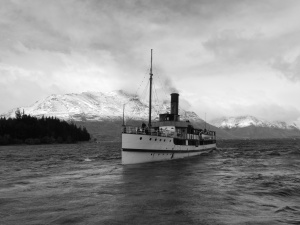
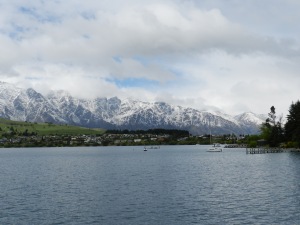

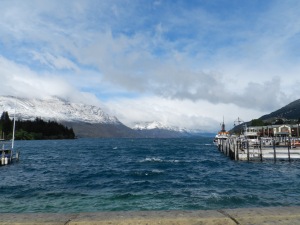


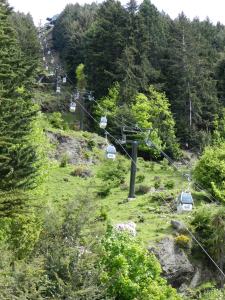
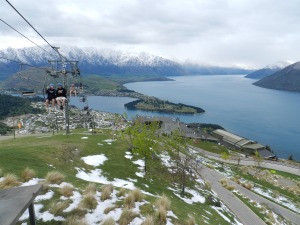

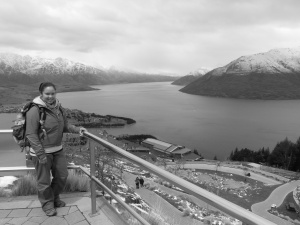


Could have done it barefeet. Easy. How are you guys doing? Milford sound was amazing.